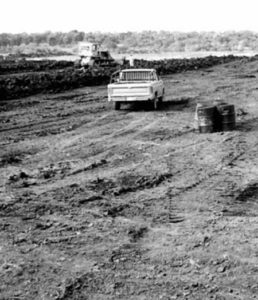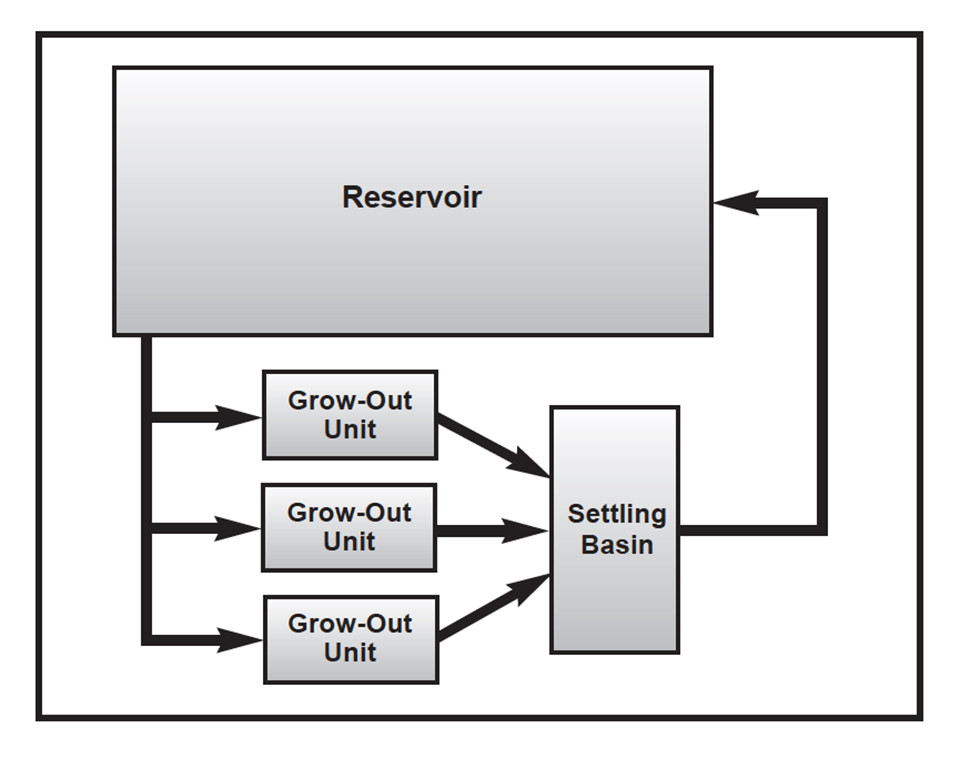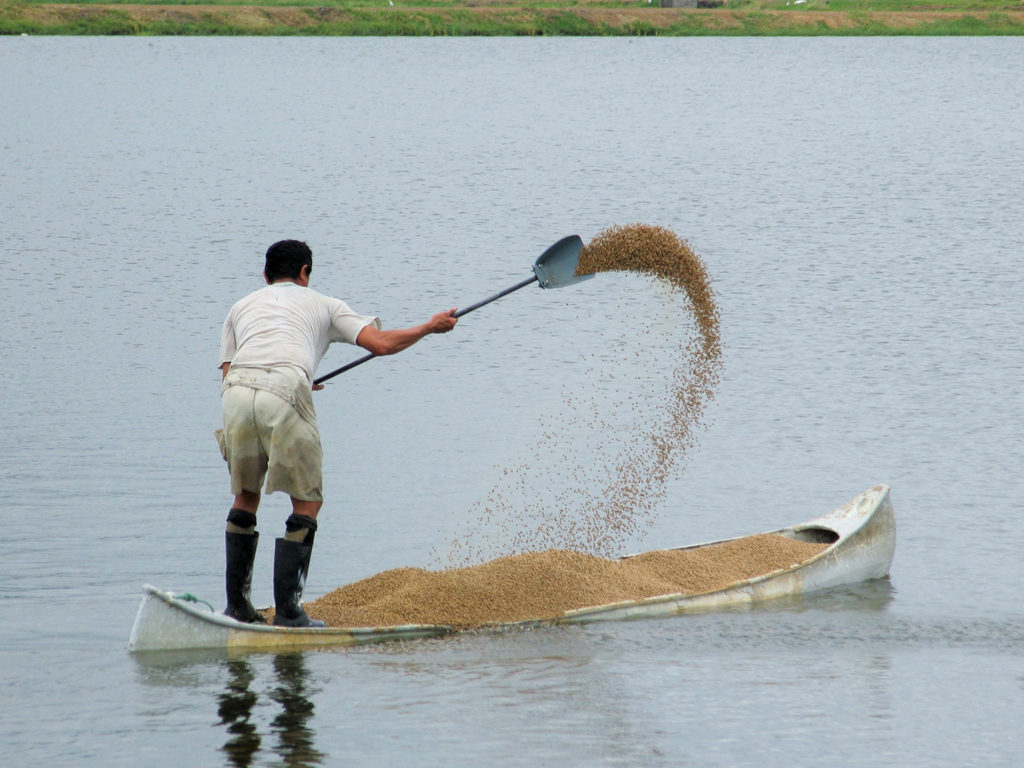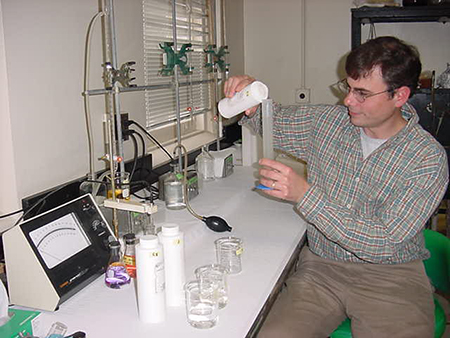Efficient water use should be a goal in all production systems
Water is a familiar substance, and as such, it is often taken for granted. Nevertheless, water is a valuable resource that must be protected for current and future generations, because both natural ecosystems and human society are highly dependent upon an adequate supply of good quality water. In many parts of the world, there is a shortage of freshwater, and the quality of freshwater water and marine water is deteriorating in many places as a result of pollution. All types of agriculture demand water, but water is especially important for aquaculture because it is the medium in which aquatic food organisms are produced. Because aquaculture is a water intensive endeavor, those concerned with water conservation have begun to inquire about the possibility of excessive water use in aquaculture. Thus, aquaculturists should constantly strive to use water efficiently and to be prepared to defend their water use practices.
Type of aquaculture and water use
Some types of aquaculture are conducted in surface waters without altering the natural flow of water or influencing the local hydrologic cycle. For example, cage and pen culture operations are simply placed in streams, lakes, or coastal waters and no alteration of hydrology occurs. Raceways usually are supplied by water from springs, and the fish are produced in the naturally-flowing water without causing changes in the volumes or ultimate destinations of spring flows. It has been calculated that up to 100 m3 of water are needed to produce 1 kg of fish in raceways without mechanical aeration, but this is not a realistic computation from a water consumption standpoint. The producer is simply using naturally-flowing water to culture fish, and there is no net decrease in available water as a result. The spring would have been discharging the same volume of water into the same water body even if the raceway had not been inserted into the path of flow. Shrimp farming also does not alter local hydrology appreciably, because estuarine or ocean water is transferred into ponds and pond water is then discharged back into the same body of water from which it was withdrawn. Also, there is an almost infinite volume of ocean water. Thus, it is not logical to consider shrimp farming as a negative factor contributing to a decrease in water volume. Of course, cage and pen culture, raceway culture, and marine shrimp farming may impair the quality of water by increasing concentrations of suspended solids, nutrients, and oxygen demand.
Inland aquaculture and hydrology

Inland pond aquaculture usually has a greater effect on local hydrology than other types of aquaculture, because water may be removed or diverted from natural water bodies for filling ponds and maintaining water levels.
Ponds can be divided into three basic types: watershed ponds; excavated ponds; and embankment or levee ponds.
Watershed ponds are formed by damming a watershed to impound runoff. These water bodies also may receive groundwater seepage. Excavated ponds usually have their bottoms below the water table and are supplied by seepage, but some also receive runoff. Excavated ponds are small because it is expensive to excavate large volumes of earth, and these water bodies are seldom used for commercial aquaculture.
An embankment pond is formed by building embankments around the area in which water is to be impounded. Soil for embankments is usually removed from the area that becomes the pond bottom. Embankment ponds can be of any size desired, but are usually supplied by water pumped from wells or streams. Embankment ponds are popular in aquaculture because water levels can be readily controlled.
The general hydrological equation, inflow = outflow ± change in storage, can be used to describe and quantify water use by ponds for inland aquaculture. The primary inflows are precipitation, runoff, and regulated water additions. The main outflows are evaporation, seepage, overflow after storms, and intentional discharge. Water conservation may be implemented by reducing the outflows. There is little that can be done to reduce evaporation, which is a major water loss from ponds. Water surface area is increased by aquaculture facilities, and this can increase the amount of water lost through evaporation at a given location.
Reducing seepage
Seepage can be a major water loss from ponds. Seepage occurs through dams, and therefore, it is important to install clay cores in dams to reduce seepage. Seepage cut-off devices also should be provided on pipes that pass through dams or embankments. Seepage also can occur through the bottoms of ponds if there are outcrops of sand, gravel, fractured rocks, or soluble minerals such as limestone or gypsum. Proper compaction of well-graded soils in pond bottoms can reduce seepage. In other situations, clay layers may need to be installed to retard seepage. Other methods for reducing seepage through pond bottoms include incorporation of bentonite or dispersing agents in soil, or installation of flexible membranes. A less expensive but less reliable means of reducing seepage is to incorporate organic matter such as manure, plant residues or scrap paper into the soil. Water levels in ponds should be maintained a few centimeters below the elevation of the intake of the overflow pipe or spillway. This allows rain falling into ponds to be conserved, and this savings may represent 1 m of water depth or more in a year.
Pond management for water conservation
Ponds also may be managed to conserve water. For example, water exchange normally is of little benefit to water quality and should not be used. For many years, channel catfish producers in the USA practiced water exchange, and they drained their ponds annually for harvest. Presently, they almost never use water and they seine-harvest fish from full ponds. Ponds typically are drained only at 6- to 8- year intervals, when it is necessary to renovate fish stocks or repair embankments. When it is necessary to drain ponds, it is often possible to transfer the water to adjacent ponds or reservoirs for storage and reuse. Water reuse in pond aquaculture is expected to become a common practice even in humid climates, because it conserves water, often lowers costs, and reduces the volume of pond effluents to lessen the potential for pollution by pond aquaculture. An example of a water reuse system using a reservoir for natural purification is shown in Fig. 1.

Even with water conservation measures in use, pond aquaculture is more water intensive than most other methods of food production. For example, in the southeastern USA, the water requirements for irrigation of most crops are 30-40 centimeters per year, and rice – a more water intensive crop – requires the application of 60-80 centimeters per year. The water requirements for channel catfish farming are 50-100 centimeters per year when ponds are not drained annually and 200-250 centimeters per year when ponds are regularly drained.
However, the value of the crop produced per unit of water used is higher for aquaculture than for other crops. Using the examples of soybeans, rice and channel catfish in the USA, average production was 2191, 5510, and 5000 kilograms per hectare, respectively, and prices per kilogram were $0.23, $0.18 and $ 1.56 U.S., respectively, for these three crops (U.S. Department of Agriculture, 1994 data). Thus, using the high ends of the water use ranges given above, the production values per cubic meter of water are $0.13 U.S. for soybeans, $0.12 U.S. for rice, $0.78 U.S. for channel catfish produced in ponds without annual draining and $0.31 U.S. for channel catfish produced in ponds which are drained annually. Water requirements will be greater for aquaculture ponds in arid climates, as shown in Table 1, but irrigation needs for other crops will also be greater. Therefore, pond aquaculture will probably use water more efficiently than other terrestrial, irrigated agriculture, even in arid climates.
Boyd, water use, Table 1
| Climate | Inflow (mm/yr) |
|---|---|
| Wet | <250 |
| Humid | 250-450 |
| Moist sub-humid | 450-600 |
| Dry sub-humid | 600-750 |
| Semi-arid | 750-900 |
| Arid | >900 |
Despite the observation that aquaculture water use is more economically efficient than crop irrigation, water conservation and water reuse has other benefits in aquaculture. By maintaining water within culture systems, natural processes have time to assimilate potential pollutants before they are discharged to natural waters, and the potential for pollution by aquaculture operations can be reduced. Sometimes mechanical measures such as filtration, sedimentation, biofiltration, and aeration also are installed in production facilities to enhance the rate of assimilation of potential pollutants.
Conclusion
In summary, pond aquaculture is a water-intensive endeavor because large amounts of water are needed to fill ponds, and water levels must be maintained throughout the grow-out period. Water may be exchanged in ponds during grow-out, and in many types of aquaculture, ponds are drained for harvest. There usually is an economic cost associated with water use, there is concern over excessive consumption of fresh water in aquaculture, and pond effluents can cause eutrophication of receiving waters. It is desirable to limit water use as much as possible in aquaculture, and efficient water use should be a goal in all production systems.
I believe that in the future, there will be a trend towards water conservation and reuse in aquaculture. The public is demanding greater stewardship of water resources and natural ecosystems by all types of production activities. Therefore, the aquaculture industry must conduct its activities in a way that conforms to public opinion.
(Editor’s Note: This article was originally published in the June 2000 print edition of the Global Aquaculture Advocate.)
Now that you've reached the end of the article ...
… please consider supporting GSA’s mission to advance responsible seafood practices through education, advocacy and third-party assurances. The Advocate aims to document the evolution of responsible seafood practices and share the expansive knowledge of our vast network of contributors.
By becoming a Global Seafood Alliance member, you’re ensuring that all of the pre-competitive work we do through member benefits, resources and events can continue. Individual membership costs just $50 a year.
Not a GSA member? Join us.
Author
-

Claude E. Boyd, Ph.D.
Professor
Department of Fisheries and Allied Aquacultures
International Center for Aquaculture and Aquatic Environments
Auburn University, AL 36849-5419 USA
Tagged With
Related Posts

Responsibility
Ammonia nitrogen dynamics in aquaculture
The major sources of ammonia in aquaculture ponds are fertilizers and feeds, and problems with high ammonia are most common in feed-based aquaculture.

Responsibility
Anion-cation balance in water
The ionic composition of inland well water can vary from suitable to toxic to cultured animals. Reliable data on concentrations of major cations (calcium, magnesium, potassium, and sodium) and major anions (bicarbonate, sulfate, and chloride) is therefore important in the management of waters for inland shrimp farming.

Responsibility
Aquaculture ponds hold carbon
Although 16.6 million metric tons of carbon are annually buried in aquaculture ponds, estimated carbon emissions for culture species have approached several metric tons of carbon per metric ton of aquaculture product.

Responsibility
Assessing, reducing pond seepage
Ponds constructed on sandy or permeable soils are most likely to have high seepage rates. Ponds built in any soil can seep if improperlty constructed.

